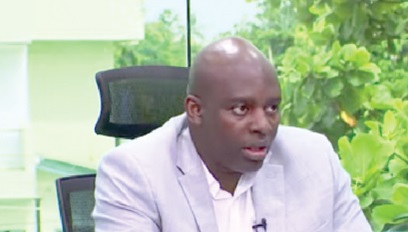A governance expert, Dr John Osae-Kwapong, has called for a review of Article 146 of the Constitution, which outlines the procedure for removing a Chief Justice as part of the ongoing constitutional review process.
He said the loopholes in the article needed to be tightened to ensure accountability and transparency in the process.
Dr Osae-Kwapong, who is also the Project Director of Democracy Project, made the call in an interview with the Daily Graphic following the suspension of the Chief Justice, Justice Gertrude Sackey Torkornoo.
Context
President John Dramani Mahama yesterday suspended Justice Torkornoo, after determining that three petitions seeking her removal establish a prima facie case to warrant a probe.
Article 146 (10) of the Constitution allows the President, acting in accordance with the advice of the Council of State, to suspend the Chief Justice when a committee is established to probe the petitions seeking the removal of the Chief Justice.
Process
Expressing his thoughts on the issue, Dr Osae-Kwapong said: “Democracy thrives on transparency and a process that has the potential to apply the highest sanction of office – removal – cannot be shrouded in secrecy. As part of the constitutional review process, Article 146 must be re-examined and the loopholes tightened.”
Dr Osae-Kwapong stated that the process surrounding the suspension was opaque, with citizens only aware of the existence of three petitions against the Chief Justice without knowing the exact grounds.
“This lack of transparency raises concerns about the vulnerability of one of the safeguards of democracy,” he said.
Dr Osae-Kwapong also stressed that good governance demands accountability, and if infractions have occurred, appropriate sanctions should be applied.
Failure to do so, he warned, would weaken good governance and send the wrong signal to other public officers.
The governance expert also raised concerns about the exercise of administrative discretion in the suspension of the Chief Justice, emphasising the need for a narrow interpretation of discretionary powers.
He said Article 146(10)(a) of the Constitution, which guides the suspension, uses the operative word "may," indicating that the President has some level of discretion in the matter.
Dr Osae-Kwapong stated that while the President is required to act in accordance with the advice of the Council of State, it is crucial that the decision-making authority is guided by a narrow interpretation of discretionary powers rather than a broad application.
This, he argues, would help prevent arbitrary decisions and ensure that the exercise of administrative discretion is fair and justifiable.
Bodies
Dr Osae-Kwapong said independent constitutional bodies such as the Judiciary serve as critical safeguards of democracy, but this independence does not mean they are unaccountable.
He noted that the Constitution has built-in mechanisms to hold these bodies accountable when they err, while also protecting them from vulnerabilities such as political turnover.
“The suspension of the Chief Justice, a historic first in the Fourth Republic, sets a precedent that carries significant implications for the country's governance and democratic systems,” he said.

